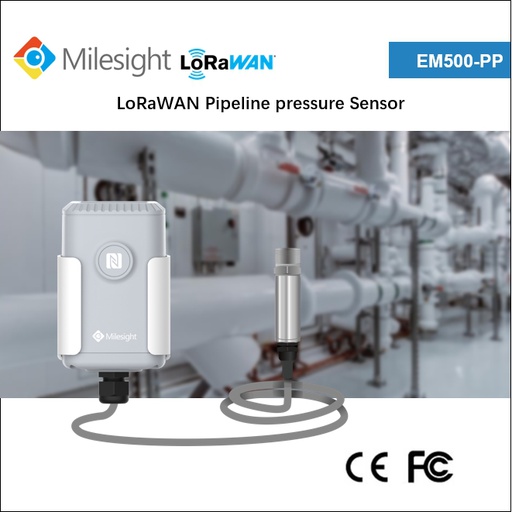Pipelines represent an efficient, safe way to transport many kinds of liquids and gases. Other methods such as truck or rail transport are more expensive, have a larger carbon footprint and are more likely to experience leakage, theft or accident that may imperil people and the environment.
Pipelines can leak or break, too, of course. Good practice and regulatory requirements make leak detection a necessary part of pipeline operation.
Many different methods have been used to detect leaks. The options for leak detection include non-continuous methods, such as inspection by helicopter, smart pigging or even specially trained sniffer dogs, said Daniel Vogt, product manager at Krohne, in a presentation recorded at a NAMUR (User Association of Automation Technology in Process Industries) annual meeting.
Continuous methods include external “hard sensors,” such as fiber optic cable, acoustic sensing, sensor hoses or video monitoring. In addition, sensing and data communications technology and specialized software have enabled development of sophisticated systems that can quickly identify leaks, even small ones, and reveal their locations.
MONITORING TO DETECT LEAKS
 Principle of extended real-time transient model (courtesy of Krohne, Inc.)
Principle of extended real-time transient model (courtesy of Krohne, Inc.)
Standard pipeline instrumentation includes sensors that measure pressure, flow rate and temperature. The different leak detection methods use the data from these sensors in various ways. The widely employed mass-balance method uses the measurements to match the pipeline’s input to its output. If the output is less than the input, there must be a leak. Statistical methods take this a step further and seek to achieve a specific confidence level in leak detection before issuing an alarm. For gases, since they are compressible, mass balance needs to take into account the “line pack”—the amount of gas inside the pipeline, which increases and decreases depending on the pressure.
A real-time transient model (RTTM) provides a more detailed hydraulic profile. It also calculates changes in the line pack and includes them with the overall mass balance.
Taking this approach further, an extended real-time transient model (E-RTTM) creates a virtual pipeline model using the pipeline geometry and the measured temperatures and pressures. Vogt described one such system offered by his company. It compares measured flow rates to the flow rates calculated for the virtual pipeline model. After analyzing the results using pattern recognition to find leak signatures, the E-RTTM software issues an alert if it recognizes a leak situation, including the leak amount and location. Because E-RTTM uses relative values, Vogt said, it works equally well with steady and transient pipeline conditions.
LOCATING LEAKS
Some leak-detection methods alert that a pipeline is leaking, but do not specifically locate where the leak is. Some advanced types of systems can give the leak location. The E-RTTM system Vogt described uses multiple means to locate the leak.
The gradient intersect method uses the fact that the flow rate downstream of the leak is lower than the flow rate upstream. Thus, the pressure drop per unit length will be lower downstream than it is upstream. To locate the leak, the E-RTTM system calculates where the two different pressure gradients intersect.
The wave propagation method uses the negative pressure wave produced at the leak. The pressure wave travels at the speed of sound in the flow medium. By observing how long the negative pressure wave takes to reach the pressure sensors at inlet and outlet of the pipe, the leak location can be determined.
The wave propagation method requires the leak to produce a strong enough negative pressure wave for it to be detected among the normal operational pressure waves in the pipeline. Smaller leaks may not be located. To obtain better localization of smaller leaks, the wave propagation method can be expanded by adding more pressure sensors along the pipe, Vogt said.
BATCH TRACKING
Multi-product pipelines transport a variety of products, such as gasoline, diesel and jet fuel, through the same pipeline, in sequence. Advanced types of pipeline monitoring can track the batches of product and predict arrival times, mixing zones and amount of pure product available. This helps maximize the amount of each product while minimizing the slop (mixed) volume. Additional instrumentation along the pipeline, such as density meters or ultrasonic flowmeters can increase the accuracy of the batch tracking, Vogt said.
THEFT DETECTION
Localization of a leak, or, in this case, locating the scene of the crime, made possible the apprehension of thieves who were stealing product from a pipeline, said Max Ihring, product manager at Krohne, during the questions period at the end of a recent webinar. The operator of a multi-product pipeline suspected product was being stolen, but did not know where or when this was happening, Ihring said. Instrumentation was installed on the pipeline and connected to a monitoring system. After a period of data collection, engineers at Ihring’s company examined the data and found events that looked like product theft. These occurred quite regularly every three weeks. Since the monitoring system also revealed where the product was being removed from the pipeline, the operator was able to alert the police with these details. Then, at the predicted time and place, police arrested the thieves.
MORE AND BETTER PIPELINE DATA
In addition to smart monitoring systems like the one described here, other ingenious monitoring methods are available. Special optic fibers can detect not only leaks but also strain in the pipeline and seismic events. Drones equipped with cameras are being used now and, perhaps with the addition of monitoring sensors, may become commonplace.
As pipeline monitoring technologies continue to develop, monitoring systems will be able to provide more and more useful data about pipeline operation in addition to their function of leak detection.
